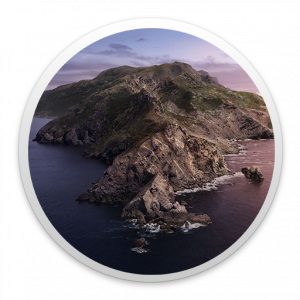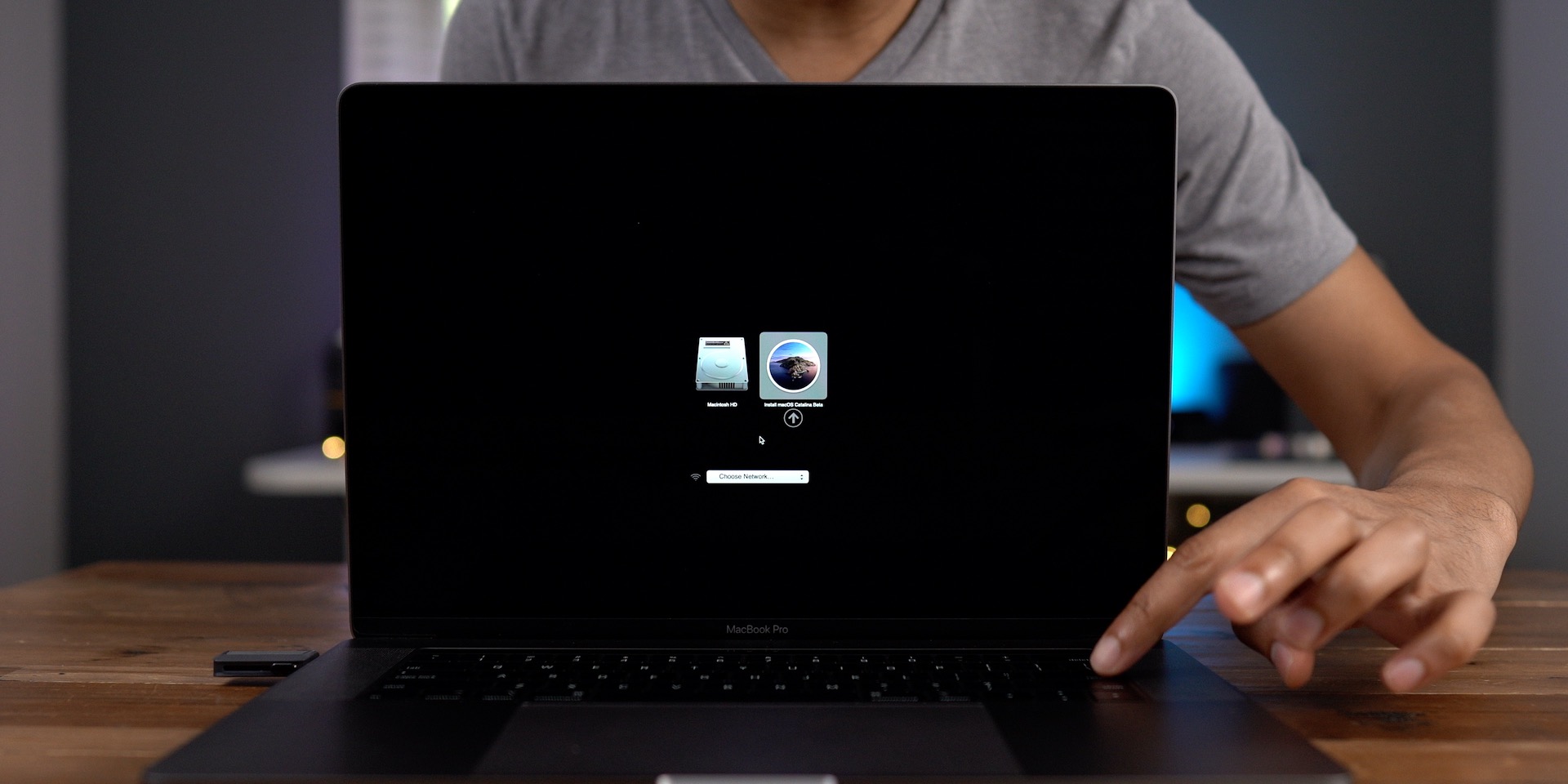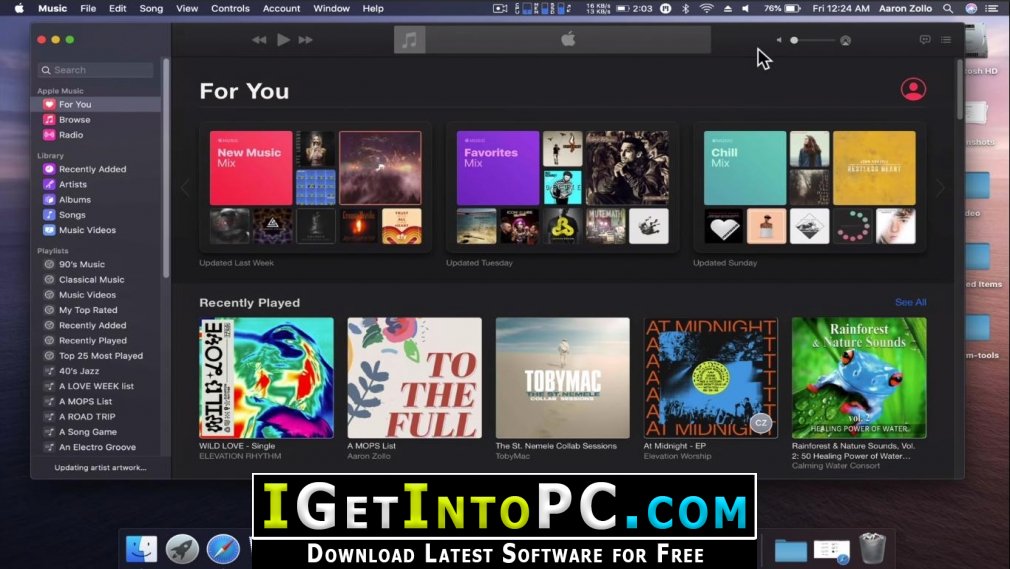- Mac Os Catalina Setup
- Macos Catalina Compatibility
- Macos Catalina Setup Sidecar
- Macos Catalina Install Usb

Downgrade Catalina to Mojave
Nov 06, 2020 For details about your Mac model, click the Apple icon at the top left of your screen and choose About This Mac. These Mac models are compatible with macOS Catalina: MacBook (Early 2015 or newer) MacBook Air (Mid 2012 or newer) MacBook Pro (Mid 2012 or newer) Mac mini (Late 2012 or newer) iMac (Late 2012 or newer) iMac Pro (2017). Linux users on Arch or Manjaro attempting to install macOS/OSX in VMWARE, or QEMU/KVM, will greatly benefit from this tutorial. UPDATED 3rd July 2020. Docker-OSX version: good to have a look, instantly run; Virt-Manager: import macOS-libvirt-Catalina.xml script from the xml file in OSX-KVM; OpenCore script./OpenCore-Boot.sh.
If you’ve installed macOS Catalina and run into problems with some of your apps, or you’ve just decided that you don’t like it as much as Mojave, the good news is that you can downgrade back to the previous version of macOS. The bad news is that it’s a lengthy process with several steps. Read on to find out how to do it.
1. Back up your Mac
Mac Os Catalina Setup
You should have backed up your Mac before you upgraded to Catalina, as you should before you perform any major upgrade or make any significant change to your Mac. However, the files you’ve been working on since you upgraded won’t be up to date on that backup. So, you should copy those files to an external disk, or a cloud storage service like Dropbox or iCloud Drive so you can retrieve them easily when you downgrade. We’re going to completely erase your Mac’s startup disk, so it’s important to copy anything you need now.
Before you backup, however, you should take steps to remove the junk and clutter from your Mac. There’s no point in backing up all the clutter along with the files you really need. To do that, I recommend CleanMyMac X. It’s the easiest way to clear out the clutter on your Mac. Here are just a few things it can do:

- Delete years worth of system junk
- Find hidden apps and folders
- Neutralize Mac-specific malware, like key loggers
- Manage hung apps and heavy CPU consumers
- Update all your software to the latest-supported versions
As you can see, CleanMyMac X does a lot more than just clear out junk files before you backup your Mac. It’s well-worth keeping it on your Mac and using regularly to keep your Mac running smoothly.
2. Save your passwords
When you downgrade mac OS Catalina, you’ll delete everything from your hard drive, including licence keys and settings. So, in addition to making sure you copy all the files that have changed since you last backed up, you should make a note of those. If you use a password manager that syncs with other devices and allows you to store licence codes and encrypted notes, you could use that. If not, any app that allows you to sync encrypted notes will do. Or you can use Apple’s Notes app. It’s also a good idea to take screen grabs of settings to make it easier to restore them later. Remember to copy the grabs to a cloud storage service or an external disk.
3. Create a bootable installer of macOS Mojave
Note, you can skip this step if your Mac shipped with macOS Mojave or if you made a backup with Time Machine before you upgraded to Catalina.
- If you’re reading this before macOS Catalina ships, you can go to the App Store and search for Mojave, then download it. If it tries to install when it’s finished downloading, quite the installer.
- If you’re reading this after Catalina ships, you can download Mojave here, but only on a Mac that’s not already running Mojave. When you click that link, Software Update will launch and start to download Mojave. When it’s finished, quit Software Update.
- Grab a USB stick with 16GB capacity or an external hard drive or SSD and plug it in to your Mac.
- Launch Disk Utilities and Erase the Drive or USB stick, formatting it as Mac OS Extended (Journaled) and selecting GUID partition map if a selection is available.
- The easiest way to create a bootable installer is to use DiskMaker X. However, you can also do it in Terminal like this:
- Launch Terminal from Applications - Utilities
- Type:
sudo /Applications/Install macOS Mojave.app/Contents/Resources/createinstallmedia --volume /Volumes/Untitledwhere ‘Untitled’ is the name of your USB stick or external hard drive - Press Return and wait for the word Done to appear in Terminal.
Whichever method you used, you should now have a bootable macOS Mojave installer. Keep it safe.
4. Uninstall macOS Catalina
- Make sure your Mac is connected to the internet.
- Click on the Apple menu and choose Restart.
- Hold down Command+R to boot into Recovery mode.
- Choose Disk Utility in the macOS Utilities window
- Select your startup disk
- Choose Erase
- Quit Disk Utility
How to downgrade Catalina to Mojave if your Mac shipped with Mojave
- Once you’ve erased your startup disk and quit Disk Utility as described above, choose Reinstall macOS from macOS Utilities.
- Press Continue.
How to rollback from Catalina using a Time Machine backup
If you backed up your Mac with Time Machine before you installed Catalina, you don’t need to create a bootable installer – you can just reinstall Mojave from your Time Machine backup. Make sure it’s plugged in if it’s an external disk. If it’s a network disk, make sure you’re connected to the network.
- Once you’ve erased your start up disk as described above, choose Restore from Time Machine backup in the macOS Utilities window.
- If your backup is on an external disk, select it. If it’s on a network disk, select it and choose Connect to Remote Disk.
- Type in your username and password for the remote disk if necessary.
- Select the data and time of the backup you want to restore from.
- Follow the onscreen instructions.
5. Install Mojave using a bootable installer
If you have a Mac that didn’t ship with Mojave and you don’t use Time Machine to backup, you’ll need to reinstall Mojave from the bootable installer we created earlier.
- Plug in the installer disk.
- Go to the Apple menu and choose restart, then hold down the Option key.
- Mojave will start installing on your Mac.
- When it’s finished, your Mac will restart and the Setup Assistant will appear
- Follow the steps in the SetUp Assistant to set up Mojave
Restore your settings
If you have reinstalled Mojave from a bootable disk, rather than a Time Machine backup, you will need to reinstall applications and copy documents across from your backup. That’s where those notes and screen shots you made earlier come in handy!
Once you’ve restored your settings and reinstalled all the apps you need, your Mac is ready to use again, running Mojave instead of Catalina.

Tip: If you want to roll back to an earlier version of macOS than Mojave, you can. To reinstall the OS your Mac shipped with, use the method in ‘How to downgrade if your Mac shipped with Mojave’. If you want to roll back to a version of macOS newer than the one your Mac shipped with but older than Mojave, you can download Sierra and earlier versions from the Mac App Store. Then follow from Step 3 in ‘Create a bootable installer of Mojave’.
My Mac is still underperforming, what to do?
You thought that reverting to macOS Mojave would get your Mac back to norm. But if it didn’t and you still experiencing sudden freeze-ups and glitches, full disk cleanup is your answer. Probably there are too many conflicting system junk files on your drive that you need to plow through.
You don’t need a regular disk cleanup app — most of them are scam — but this tool, CleanMyMac X, is notarized by Apple, and can really do helpful optimizations on your Mac.
- Download the free edition here
- Go to Maintenance tab
Now you can perform some of the tasks suggested by the app, like running Maintenance Scripts. Also, check the System Junk tab and remove all the useless files it recommends you to delete.
As you can see, it is possible to uninstall Catalina if you decide you don’t want to continue using it. It’s essential, however, that you backup your Mac before you upgrade. And remember, before you backup, clear out the clutter with CleanMyMac X. That way you won’t use precious space on your backup drive copying over junk files.
Installation
- Download Visual Studio Code for macOS.
- Open the browser's download list and locate the downloaded archive.
- Select the 'magnifying glass' icon to open the archive in Finder.
- Drag
Visual Studio Code.appto theApplicationsfolder, making it available in the macOS Launchpad. - Add VS Code to your Dock by right-clicking on the icon to bring up the context menu and choosing Options, Keep in Dock.
Launching from the command line
You can also run VS Code from the terminal by typing 'code' after adding it to the path:
- Launch VS Code.
- Open the Command Palette (⇧⌘P (Windows, Linux Ctrl+Shift+P)) and type 'shell command' to find the Shell Command: Install 'code' command in PATH command.
- Restart the terminal for the new
$PATHvalue to take effect. You'll be able to type 'code .' in any folder to start editing files in that folder.
Note: If you still have the old code alias in your .bash_profile (or equivalent) from an early VS Code version, remove it and replace it by executing the Shell Command: Install 'code' command in PATH command.
Alternative manual instructions
Instead of running the command above, you can manually add VS Code to your path, to do so run the following commands:
Start a new terminal to pick up your .bash_profile changes.
Note: The leading slash is required to prevent $PATH from expanding during the concatenation. Remove the leading slash if you want to run the export command directly in a terminal.
Note: Since zsh became the default shell in macOS Catalina, run the following commands to add VS Code to your path:
Touch Bar support
Out of the box VS Code adds actions to navigate in editor history as well as the full Debug tool bar to control the debugger on your Touch Bar:
Mojave privacy protections
After upgrading to macOS Mojave version, you may see dialogs saying 'Visual Studio Code would like to access your {calendar/contacts/photos}.' This is due to the new privacy protections in Mojave and is not specific to VS Code. The same dialogs may be displayed when running other applications as well. The dialog is shown once for each type of personal data and it is fine to choose Don't Allow since VS Code does not need access to those folders. You can read a more detailed explanation in this blog post.
Updates
VS Code ships monthly releases and supports auto-update when a new release is available. If you're prompted by VS Code, accept the newest update and it will get installed (you won't need to do anything else to get the latest bits).
Note: You can disable auto-update if you prefer to update VS Code on your own schedule.
Preferences menu
Macos Catalina Compatibility
You can configure VS Code through settings, color themes, and custom keybindings available through the Code > Preferences menu group.
You may see mention of File > Preferences in documentation, which is the Preferences menu group location on Windows and Linux. On a macOS, the Preferences menu group is under Code, not File.
Next steps
Once you have installed VS Code, these topics will help you learn more about VS Code:
- Additional Components - Learn how to install Git, Node.js, TypeScript, and tools like Yeoman.
- User Interface - A quick orientation around VS Code.
- User/Workspace Settings - Learn how to configure VS Code to your preferences settings.
Common questions
Macos Catalina Setup Sidecar

Why do I see 'Visual Studio Code would like access to your calendar.'
If you are running macOS Mojave version, you may see dialogs saying 'Visual Studio Code would like to access your {calendar/contacts/photos}.' This is due to the new privacy protections in Mojave discussed above. It is fine to choose Don't Allow since VS Code does not need access to those folders.
Macos Catalina Install Usb
VS Code fails to update
If VS Code doesn't update once it restarts, it might be set under quarantine by macOS. Follow the steps in this issue for resolution.

Does VS Code run on Mac M1 machines?
Yes, VS Code supports macOS ARM64 builds that can run on Macs with the Apple M1 chip. You can install the Universal build, which includes both Intel and Apple Silicon builds, or one of the platform specific builds.
